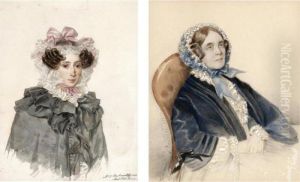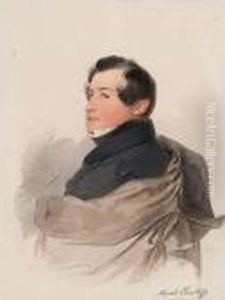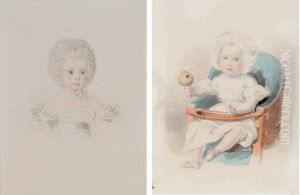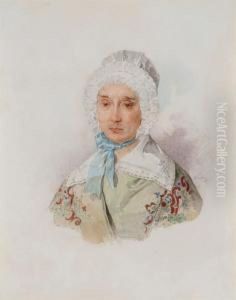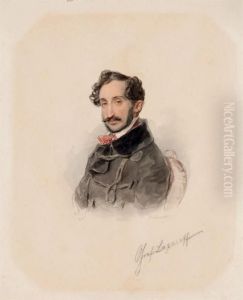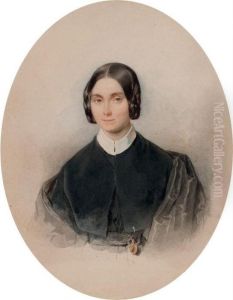Piotr Fedorovich Sokolov Paintings
Piotr Fedorovich Sokolov was a distinguished Russian watercolor portraitist and genre painter, born in 1791 into the era of the Russian Empire's cultural flourish. His artistic journey began under the guidance of his father, a minor government official who recognized and nurtured his son's burgeoning talent. This early encouragement led Sokolov to pursue formal education in the arts, eventually studying at the Imperial Academy of Arts in Saint Petersburg, where he honed his skills and developed a distinctive style that would later define his career.
Sokolov's work is characterized by its delicate use of watercolor, capturing the nuances of expression and the subtleties of the social and familial relationships of his subjects. His portraits are celebrated for their depth and sensitivity, offering a window into the personal lives of the Russian nobility and bourgeoisie of his time. Beyond portraiture, Sokolov also engaged with genre scenes, illustrating the everyday life of his contemporaries with a keen eye for detail and a compassionate portrayal of his subjects.
Throughout his career, Sokolov remained closely tied to the Imperial Academy of Arts, contributing to its exhibitions and gaining recognition among his peers and the public. Despite this, he often chose to work outside the confines of the academy's prescriptive demands, seeking instead to capture the genuine essence of his subjects without the imposition of stylistic constraints.
Sokolov's legacy is not merely in the beauty of his works but also in his contribution to the development of Russian watercolor painting. He was a key figure in the transition from formal, academically influenced portraiture to a more intimate, personal style that would influence generations of Russian artists. His death in 1848 marked the end of a career that had significantly impacted the Russian art scene, leaving behind a body of work that continues to be celebrated for its emotional depth and technical mastery.






